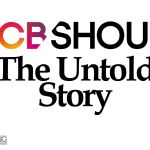Companies across the globe have called for their workforce to work remotely as part of precautionary and social distancing measures to ensure the health and wellness of their employees. What will be the impact of current and future work?
Will there be a decrease in pitch activity? Questions abound as both marketers and agencies try to figure out how to maintain productivity in volatile times. Despite uncertainty, marketers won’t stop planning for the future. Now more than ever, they will be looking for ways to manage cost, increase effectiveness, and explore innovative ways for reaching audiences.
Pitches will continue through methodologies and approaches will need to be adapted to accommodate people working from multiple locations and time zones. One platform that will aid the pitch process is video conferencing. With chemistry a significant component of the selection process, many marketers and agencies have voice reservations around its effectiveness.
Connecting with people through a screen requires a lot more preparation and consideration than conducting a presentation in person. One must be conscious of nuance and pay attention to clarity when the opportunity for in-person presentation is not available.
However, these are not reasons to avoid using video conferencing to aid the pitch process. It might not be replacement for face-to-face meetings, but if there are restrictions on travel and gathering, if done right, virtual pitching can be helpful to keep business moving.
The core remains unchanged
It is important to remember that the core elements that make up a pitch is not diminished in a virtual situation. Marketers are still looking for agencies that can engage and show great creative and innovative thinking. They want to meet agencies who they can envision having a relationship with. New skills might need to be learned to communicate capability in a virtual environment, and agencies that are looking to sharpen their techniques should take the initiative to do so.
7 common challenges
1.Jaws
The meeting doesn’t accomplish anything-no progress is made, so after an hour, everyone’s hungry for action.
Solution- Develop one to three clear objectives
2.The Blob
The session has no structure and oozes from topic to topic without a plan.
Solution-Create an interactive agenda
3.The Twilight Zone
Participants that can’t attend the meeting in person feel like they’re in an alternate universe
Solution-Give all participants the same experience
4.The Exorcist
The presenter becomes possessed and drones on and on with little opportunity for others to participate
Solution-Manage time wisely
5.The Sixth Sense
Participants can sense a poorly planned web meeting and aren’t engaged.
Solution-Know your web meeting tools
6.Night of the living dead
With no role in the meeting, participants become so bored they need to be brought back to life.
Solution-Set expectations and provide opportunities to participate
7.Labyrinthe
There is an elaborate structure of PowerPoint presentations
Solution-Use more visuals
BEST PRACTICES
Be familiar with the platform
If a virtual pitch is being called, marketers should inform participating agencies of the video conferencing platform being used as early as possible and provide advance details of system requirements. Technical glitches are not uncommon in any virtual meeting scenario, but lack of preparation and contingency will negatively impact the overall experience.
• Ensure that the video conference platform works across systems
• Decide if you want all participants to be visible in the meeting
• Be familiar with standard functionality (i.e. sharing screens, audio levels, mute).
• Assign someone from your IT team to test the system with key participants.
Design the meeting around discussion
The challenge of having participants using different types of technology and having access to different internet bandwidths can be addressed by ensuring that any decks and videos are shared prior to the call so that the meeting time can be used for discussion and answering questions. Virtual pitches require heightened engagement, and the less the time people spend “watching” and more time “talking”, the higher this engagement is likely to be. In addition, having meetings designed around discussion will ensure that meetings are kept to reasonable duration. It is highly likely that for regional or global pitches participants will be different places and different timezones. This might mean that one participant is up at 3am to be on the call, while another is joining the pitch at the end of their day.
• Have a set timeframe for the meetings.
• Send presentation decks and videos prior to the call.
• Marketers should have any questions prepared before the meeting.
Make it face to face
Aside from technical issues, engagement is the biggest challenge in virtual pitching. Studies have shown that on average, a person stops watching videos after 6 minutes, whereas in person, brief attention declines after 10 to 18 minutes. A study of attention during conference calls revealed that 23% of managers provided full attention, 25% attended to their email and 27% did other work (Hall, 2007). With in-person scenarios, presenters are able to quickly observe and re-energize their audience when needed. In a virtual scenario, it is too easy for people to stop paying attention.
The beauty of modern video conferencing platforms is the ability to see many people. To help raise attention levels, require the core team to be visible on video. This makes it hard for participants to be distracted and provides more exposure to facial expressions and body language, which will help overall communication.
• When selecting a video conferencing platform, ensure that group video call is available.
• Ensure you are in a room with good lighting and without distractions in the background.
• Have a telephone conference bridge line available as a fall back in case video conferencing fails to work. As participants should already have access to any presentation or video material, the meeting leader or presenter will be able to give reference cues.
Follow good chairing protocol
A common complaint in virtual meetings is that conversations tend to meander. This, however, is not exclusive to online conferencing and can happen in traditional meetings without a clear agenda and meeting leader. Time is wasted on periods of silence where participants are waiting for instruction, or alternatively, people might have so much to say that they end up speaking over each other without clear meeting protocol.
• Assign a meeting leader.
• Share the meeting structure in advance.
• Introduce team members/teams that will be in attendance.
• Be firm about who speaks and for how long.
• Send any relevant documents or files to participants in advance.
• Record all pitches and circulate it to participants for reference.
• Agree on ground rules, i.e. state your name before speaking.
Leverage the power of video
Video is a powerful medium to communicate emotion. This can be especially helpful in virtual situations where lack of physical proximity limits reaction and response. Agencies using videos in their pitch presentations should pay attention to use of color, facial expression, movement, and music.
• Apply the craft of storytelling to your videos. Use them as a tool to elevate engagement. When creating videos ask:
– What do we need participants to learn during this meeting?
– What will they know about us afterwards that they didn’t know before? – How will participants’ viewpoints or perspectives change?
– How will their beliefs be affected?
• Produce two versions of your videos – one with voiceovers and one with subtitles. Consider sending the version with voice overs to the client and use versions with subtitles in the virtual pitch. • Be mindful of the size of your videos. Download speeds can affect replay quality.
Make case studies self-explanatory
Agencies should take the initiative to be more detailed in their case studies and refrain from being overly conceptual. There might not be the time or opportunity for further discussion in a virtual pitch, and the best way to ensure that marketers understand what you want to say is to communicate it clearly.
Lag time might impact the quality of video viewing. Send extended case study videos to the client ahead of time and keep videos shown during the virtual pitch short and succinct. Use titles in video to signpost important points. Consider adding subtitles in case the audio doesn’t work well.
Organise opportunity for feedback
Virtual pitches should be expected to be shorter than in-person presentations. This means that further clarification might be required on some points missed or not received clearly, or people have questions they were not able to ask due to time restraints. Marketers who organise virtual pitches should ensure that a feedback process is in place where team members can collate and share their feedback in real-time or after the presentation.
MARKETING Magazine is not responsible for the content of external sites.
An afternoon of conversations we never had, with leaders most of you never met.
Discover what’s possible from those who made it possible. Plus a preview of The HAM Agency Rankings REPORT 2024.
Limited seats: [email protected]
BOOK SEATS NOW






